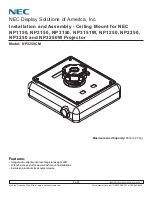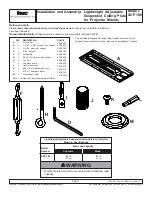
27
UK
[rPx] is always smaller than [SPx]. The unit only accepts values which are lower than the
value for [SPx]. If [SPx] is shifted, [rPx] also shifts provided that the lower end of the setting
range is not reached.
10.3.3 Define switching limits [FHx] / [FLx] (window function)
►
Make sure that for [oux] the function [Fno] or [Fnc] is set.
►
Set [FHx] first, then [FLx].
►
Select [FHx] and set the upper limit of the acceptable range.
FH1
...
FH4
►
Select [FLx] and set the lower limit of the acceptable range.
FL1
...
FL4
[FLx] is always lower than [FHx]. The unit values which are lower than the value for [FHx].
If [FHx] is shifted, [FLx] also shifts provided that the lower end of the setting range is not
reached.
10.3.4 Set the switching delays [dSx] for switching outputs
►
Select [dSx] and set the value between 0.0 and 60 s.
The switching delay reacts according to VDMA.
dS1
...
dS4
10.3.5 Set the switch-off delay [drx] for switching outputs
►
Select [drx] and set the value between 0.0 and 60 s.
The switching delay reacts according to VDMA.
dr1
...
dr4
10.3.6 Define the switching logic [P-n] for the outputs
►
Select [P-n] and set [PnP] or [nPn].
P-n
10.3.7 Define response of the outputs in case of a fault [FOUx]
►
Select [FOUx] and set value:
FOU1
...
FOU4
[On] = Output switches ON in case of a fault
[OFF] = Output switches OFF in case of a fault.
A fault is for example: defective hardware, too low a signal quality. Overflow
is not considered to be a fault
(→ 11.3)
.













































